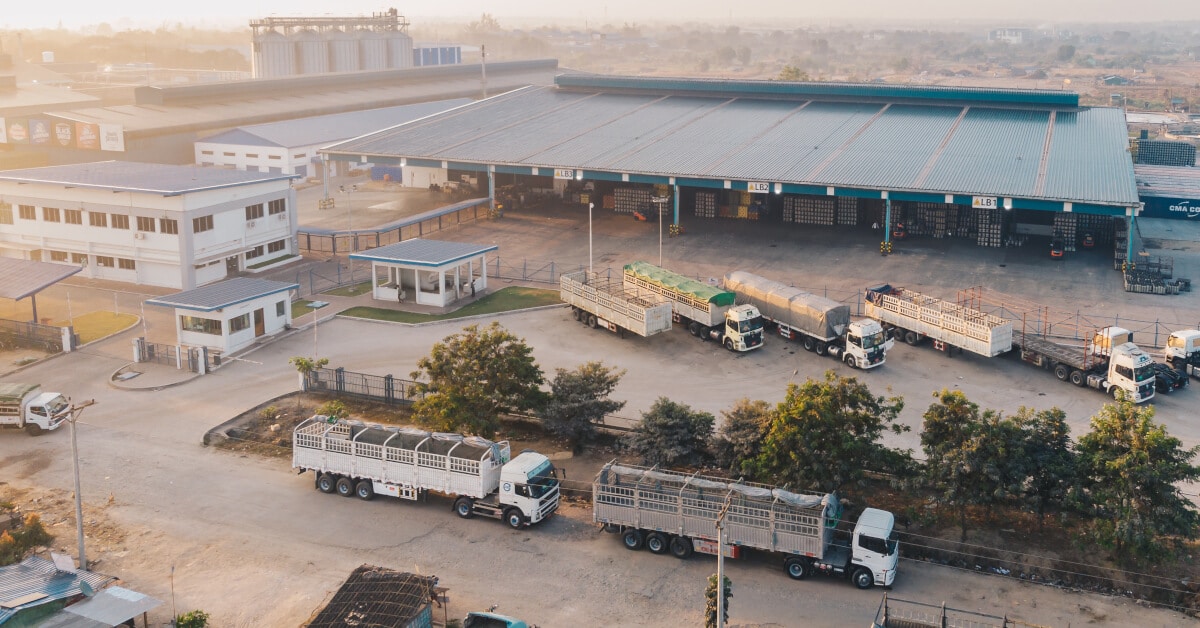
Introduction
Crossdocking is the practice of using inbound receipts to fulfil outgoing orders.
Crossdocking allows you to match outbound shipments to planned receipts ahead of time, to achieve quicker flow-through times and optimization in warehouse resources.
What is cross docking?
Cross docking is when you receive goods from a supplier in your warehouse and then move them directly onto an outbound vehicle to be transported out to their destination.
Cross docking eliminates the need for storage and saves time and effort for your business.
Why is cross docking used?
Cross docking is particularly efficient when dealing with specific sorts of items and supply chains that need to be delivered to the client rapidly.
Some industries that implement and benefit from cross docking include food and beverage, pharmaceuticals, consumer products, chemicals, and e-commerce.
This is especially important when dealing with perishables or drugs that require precise temperature control and prompt delivery to the end user.
Some types of cross docking
- Planned cross docking
When you know your supply ahead of time, planned crossdocking works best. It allows you to manage your warehouse’s throughput and match known demand with predicted supplies.
- Opportunistic cross docking
Crossdocking on the fly helps with uncertainty. The rules engine is used to match newly arrived supply to current demand. When a supply or demand source is altered, updated, or terminated, this helps.
- Pre-distribution cross docking
In pre-distribution cross docking, goods are identified and packed based on the final destination even before the goods leave the supplier, so they arrive at the cross-dock bagged and tagged for transfer.
The benefit of this model is that the goods would spend little time in the warehouse but would be using pre-determined sales data. For example: Before the shipment is sent, we need to know which customers need what. Information transfer, system integration, and coordination are all involved.
- Post-distribution cross docking
In post-distribution cross docking, the goods are sorted and packed based on the final destination upon receipt into the warehouse.
The benefit of this model is that the business can make informed decisions using up-to-date sales demand data, but it would require more time in the warehouse for processing.
How can your Warehouse Management System ensure cross docking operations are successful?
To implement cross docking service in your warehouse, 3PLs require a robust Warehouse Management System to expand capabilities with the following functions.
- Electronic Advance Ship Notice (ASN) Transmission
The ASN offers real-time data about inbound and outgoing shipments. The electronic data informs the warehouse on when an order will be dispatched, what goods will be shipped, and how much of each item will be shipped, as well as carrier information. This critical information is transmitted electronically by the supplier in advance of the merchant receiving the items via electronic data interchange (EDI), Application Programming Interface (API), e-mail, or other methods. This allows the warehouse to automate the receiving procedure based on the ASNs given by the supplier.
- Barcode Scanning
Cross docking activities are automated with barcodes and mobile computers to ensure efficient and exact movement of products, equipment, and people.
Cross docking necessitates an elevated level of asset visibility, which is why barcode WMS guarantees that the right items are loaded into the right trailer in the right sequence to ensure delivery efficiency for the cross docking operation.
- Data and Process Automation
Cross dock operations can only be executed with accurate product data. A comprehensive WMS with data and process automation capabilities can automate cross docking operations suggested outbound fulfillment during goods receiving. Operators will be notified on your mobile barcode scanners to cross dock specified items to complete outstanding shipments according to pre-determined rules.
- Business Intelligence
WMS business intelligence provides inventory tracking and analysis to understand what is going on in your warehouse, including a breakdown of warehouse KPIs.
These centralized data interface empowers operators to see all electronic ASN inbound and outbound matches, based on pre-set rules for specific customers and brands, while monitoring all product fulfilment via cross dock based on filters. Thereby ensuring a complete and efficient control of the cross dock operation in the warehouse.
Find out more about Symphony Cloud-based WMS here and Connect with us on our Facebook Page


